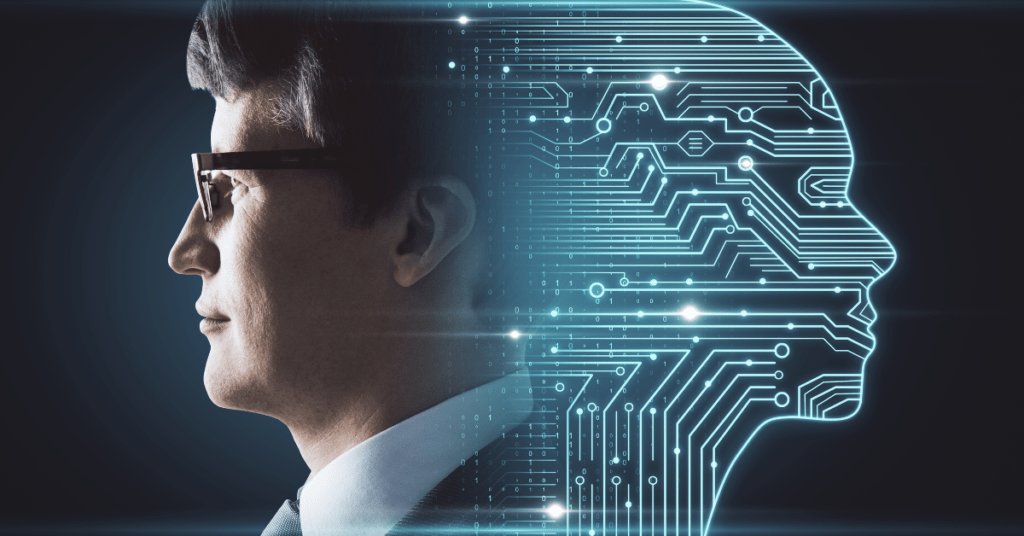Tired of the one-size-fits-all approach to education? Feeling overwhelmed by the ever-growing demands of curriculum development?
In today’s rapidly changing world, traditional curriculum design can often leave both teachers and students frustrated. Teachers struggle to cater to the diverse needs of their students, and students may find themselves bored or challenged by a curriculum that doesn’t align with their learning styles.

But what if there was a way to personalize learning, streamline educator workloads, and create more engaging curriculum – all at the same time? Enter the exciting world of Artificial Intelligence (AI) in education!
AI has the potential to supercharge curriculum design, offering a range of tools and applications that can revolutionize the way we teach and learn. By leveraging the power of AI, educators can create dynamic and individualized learning experiences that empower students to reach their full potential.
This blog post will explore how AI can transform curriculum design, focusing on three key areas: personalized learning, improved teacher efficiency, and the creation of more engaging curriculum. So buckle up, educators, and get ready to Level Up Your Lessons!
II. How AI Can Personalize Learning
Imagine a classroom where every student receives a learning experience tailored specifically to their needs. This is the promise of personalized learning, an approach that recognizes that students learn at different paces and have unique strengths and weaknesses.

Traditional curriculum design often falls short in this regard, forcing students to progress through material at a set pace regardless of their individual understanding. This can lead to frustration and disengagement for some students, while others may find themselves bored by concepts they already grasp.
AI can be a game-changer for personalized learning by analyzing vast amounts of student data. This data can include:
- Performance on quizzes and assignments
- Interactions with learning materials
- Self-reported learning styles (visual, auditory, kinesthetic)
By analyzing this data, AI-powered platforms can create a comprehensive picture of each student’s strengths, weaknesses, and preferred learning styles. This information can then be used to:
- Tailor the content and pace of instruction to match individual student needs.
- Recommend targeted learning resources such as articles, videos, or practice exercises that address specific learning gaps.
- Provide differentiated instruction within the classroom, allowing teachers to offer additional support to students who need it and enrichment activities for those who excel.
Here are some examples of AI-powered tools that can personalize learning:
- Adaptive Learning Platforms: These platforms adjust the difficulty and sequence of learning materials based on student performance, ensuring students are constantly challenged without feeling overwhelmed.
- Recommendation Engines: Similar to those used by streaming services, these tools can recommend learning resources that align with a student’s interests, learning style, and current area of study.
In the next section, we’ll explore how AI can also improve teacher efficiency, freeing up valuable time for more personalized instruction.
III. How AI Can Improve Teacher Efficiency
Teachers are the heart and soul of education, but let’s face it, they often wear many hats: educators, curriculum developers, assessment creators, and even data analysts. The burden of lesson planning, grading, and managing student data can leave teachers feeling overwhelmed and stretched thin.
This is where AI steps in as a powerful tool to streamline teacher workloads and free up valuable time for what matters most – meaningful interaction with students.
Here’s how AI can help teachers become more efficient:
- Automated Grading and Feedback: AI-powered tools can automate the grading of multiple-choice questions, short answer responses, and even essays. This frees up teachers from tedious tasks, allowing them to focus on providing more personalized and constructive feedback to students.
- Intelligent Reporting and Analytics: AI can analyze student data to generate comprehensive reports that highlight student progress, areas of strength and weakness, and potential learning gaps. This allows teachers to quickly identify students who need additional support and tailor their instruction accordingly.
- Content Creation and Curation: AI can assist teachers in creating personalized learning materials and finding high-quality educational resources. Imagine generating quizzes tailored to specific learning objectives or having AI curate a list of articles and videos that match your students’ interests and learning styles.
The key takeaway is not to replace teachers with AI, but to empower them with AI. By automating time-consuming tasks and providing valuable insights, AI can allow teachers to focus on what they do best: inspiring, motivating, and guiding students on their learning journeys.
In the next section, we’ll delve into how AI can make curriculum design more engaging and interactive for students.
IV. How AI Can Create More Engaging Curriculum
Let’s be honest, traditional textbooks and lectures can sometimes leave students feeling disengaged and uninspired. But what if learning could be fun, interactive, and even a little bit like a game? This is the potential of AI-powered curriculum design, which can create immersive and engaging learning experiences that capture students’ imaginations and ignite their curiosity.
Here’s how AI can make curriculum design more engaging:
- Interactive and Gamified Learning: Imagine learning history through a simulated historical event or practicing math concepts through a captivating educational game. AI can be used to develop interactive and gamified learning experiences that make learning feel more like play. By incorporating elements of competition, problem-solving, and rewards, these experiences can boost student motivation and engagement.
- Personalized Learning Paths: As discussed earlier, AI can personalize the learning experience by tailoring content to individual student interests. Imagine a curriculum that allows students to explore topics in-depth that they find fascinating, or choose learning activities that align with their preferred learning styles. This level of personalization can significantly increase student engagement and ownership over their learning.
- Adaptive Learning Environments: AI can create dynamic learning environments that adjust to student progress. Imagine a virtual reality experience that adapts the difficulty level of challenges based on the student’s performance, or a language learning program that personalizes conversations based on the student’s strengths and weaknesses. These adaptive environments keep students challenged and engaged, fostering a love of learning that goes beyond textbooks and worksheets.
The possibilities for AI-powered engagement are vast and constantly evolving. From simulations and virtual reality experiences to personalized learning journeys and interactive games, AI can transform curriculum design into an exciting adventure for students.
In the next section, we’ll acknowledge some challenges and considerations for using AI in education before concluding with a positive outlook on the future.
V. Challenges and Considerations of Using AI in Education
While AI holds immense promise for revolutionizing curriculum design, it’s important to acknowledge some potential challenges and considerations:
- Teacher Training and Support: For AI to be effectively integrated into classrooms, educators will need proper training and support in understanding AI tools and utilizing them effectively.
- Data Privacy and Security: As AI relies heavily on student data, concerns exist regarding data privacy and security. Schools and developers of AI tools must prioritize robust data protection measures and ensure transparency in data collection and usage.
- Equity and Access: Not all schools have equal access to technology and resources. There’s a risk that AI could exacerbate existing educational inequalities if certain schools lack the infrastructure to implement AI tools effectively.
- Over-reliance on AI: While AI can be a powerful tool, it shouldn’t replace the critical role of human educators. Teachers bring empathy, creativity, and social-emotional learning to the classroom, aspects that AI cannot replicate.
It’s crucial to approach AI in education with a focus on responsible development and implementation. By addressing these challenges and ensuring ethical use of AI, we can harness its potential to create a more personalized, engaging, and equitable learning experience for all students.
VI. Conclusion
The future of education is brimming with exciting possibilities thanks to the potential of AI. By leveraging AI’s ability to personalize learning, streamline teacher workloads, and create engaging curriculum, we can transform classrooms into dynamic and empowering learning environments.
Imagine a world where:
- Every student receives a learning journey tailored to their unique needs and interests.
- Teachers are freed from tedious tasks, allowing them to focus on fostering a love of learning in their students.
- Curriculum design becomes an interactive and engaging adventure that sparks curiosity and ignites imaginations.
This is the vision that AI-powered education offers. While challenges exist, by embracing responsible development and implementation, we can ensure that AI becomes a powerful tool for empowering educators and unlocking the full potential of every student.
So, are you ready to Level Up Your Lessons with AI? The future of education is here, and it’s an exciting one!
Related Content
- Curriculum Design Using Artificial Intelligence (AI) Back Propagation Method
- Sustainable Curriculum Planning for Artificial Intelligence Education: A Self-Determination Theory Perspective
- Transforming Education with AI: Innovations in Curriculum Design
Explore Micro2media
- Rise of the Robo-Dresser: Can Machines Help Us Get Ready in the Morning?
- Diversify & Dominate: Top 12 Artificial Intelligence ETFs for 2024
- Unveiling the Synergy of AI and Data Science: A Comprehensive Exploration

